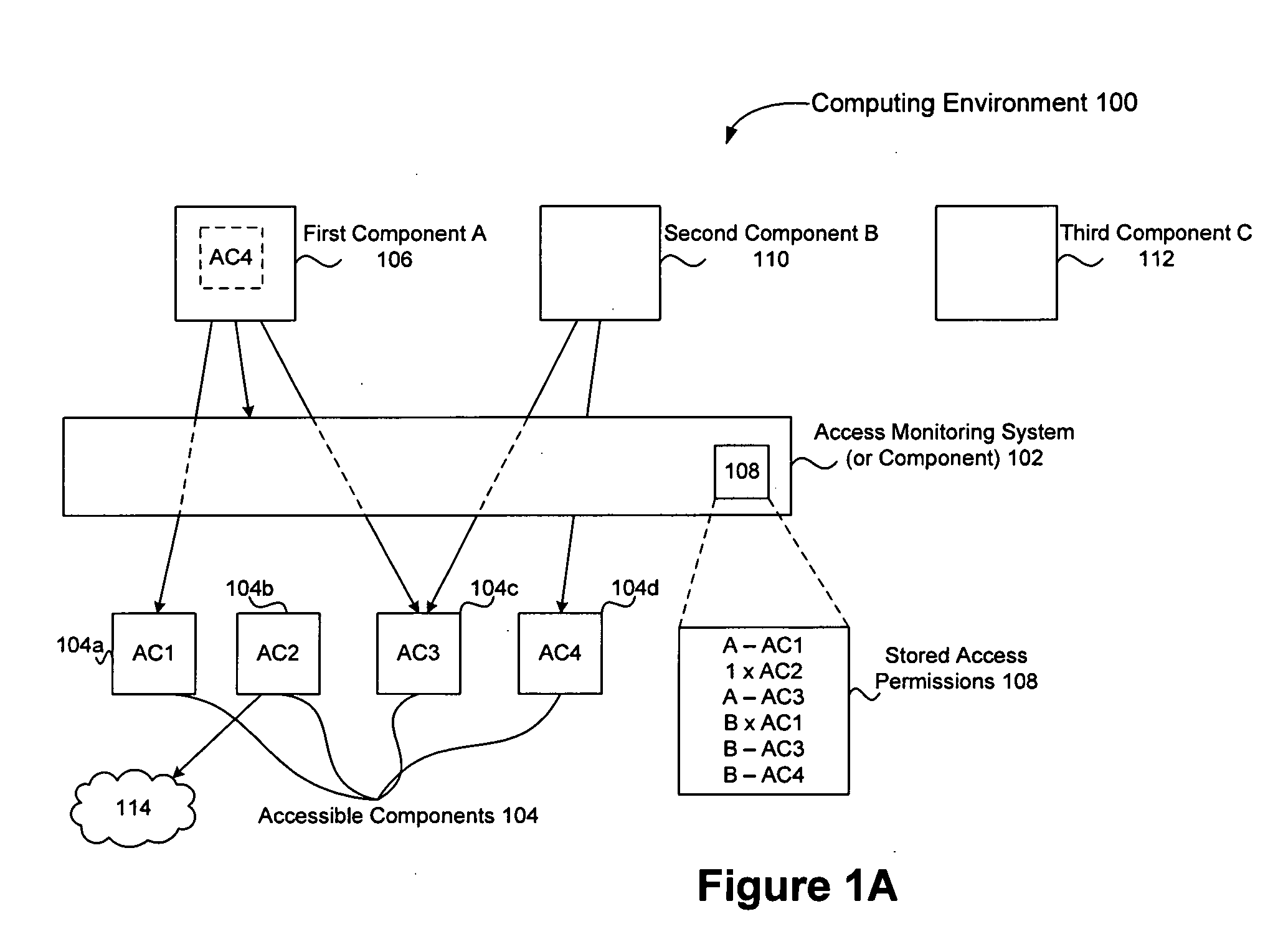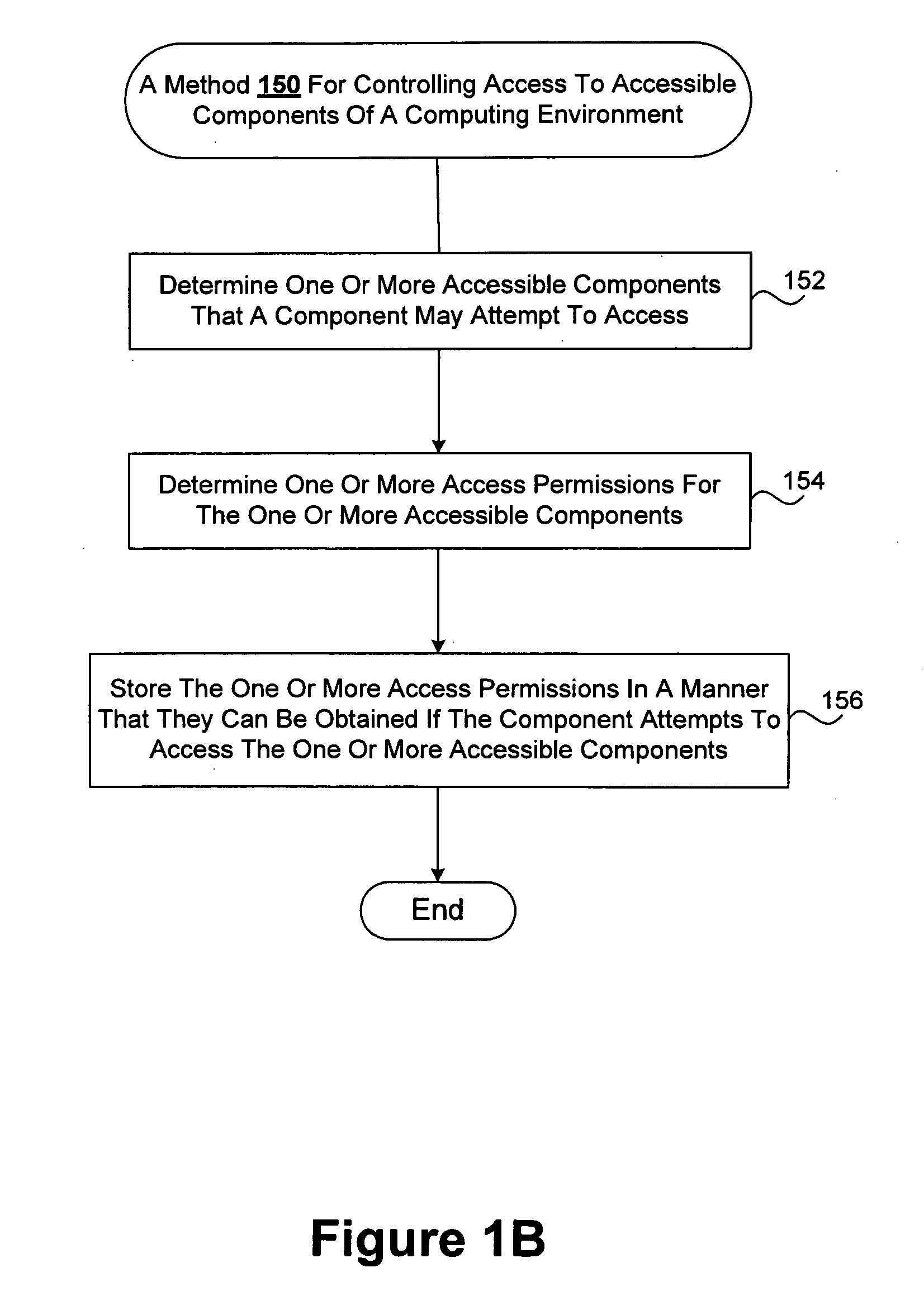Safe and efficient access control mechanisms for computing environments
a technology of access control and computing environment, applied in the field of safe and efficient access control mechanisms for computing environment, can solve the problems of more complex computing system storage of content, and achieve the effect of saving processing time, effective making better decisions, and better decisions
- Summary
- Abstract
- Description
- Claims
- Application Information
AI Technical Summary
Benefits of technology
Problems solved by technology
Method used
Image
Examples
Embodiment Construction
[0033]As noted in the background section, computing devices and especially mobile devices are becoming increasingly more popular. Today, wireless networks and mobile communication devices (e.g., Smartphones, cell phones, Personal Digital Assistants) are especially popular. Unfortunately, however, partly because of this popularity, more and more malicious attacks are being directed to wireless networks and mobile communication devices. In addition, recent developments, including relatively new services (e.g., email, file transfer and messaging) and use of common software platforms (e.g., Symbian, Embedded Linux, and Windows CE operating systems) have made mobile communication devices relatively more exposed to malicious attacks. The exposure to malicious attacks could become worse as the wireless networks and mobile communication devices continue to evolve rapidly. Today, wireless and / or portable communication devices (e.g., cell phones, Smartphones) can offer similar functionality a...
PUM
 Login to View More
Login to View More Abstract
Description
Claims
Application Information
 Login to View More
Login to View More - R&D
- Intellectual Property
- Life Sciences
- Materials
- Tech Scout
- Unparalleled Data Quality
- Higher Quality Content
- 60% Fewer Hallucinations
Browse by: Latest US Patents, China's latest patents, Technical Efficacy Thesaurus, Application Domain, Technology Topic, Popular Technical Reports.
© 2025 PatSnap. All rights reserved.Legal|Privacy policy|Modern Slavery Act Transparency Statement|Sitemap|About US| Contact US: help@patsnap.com



